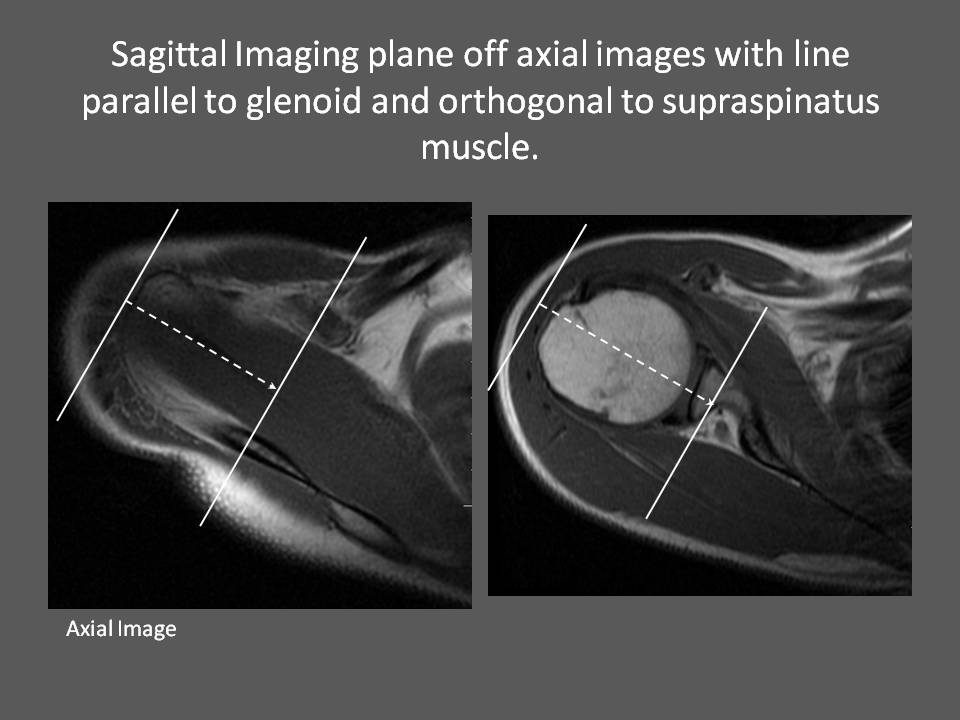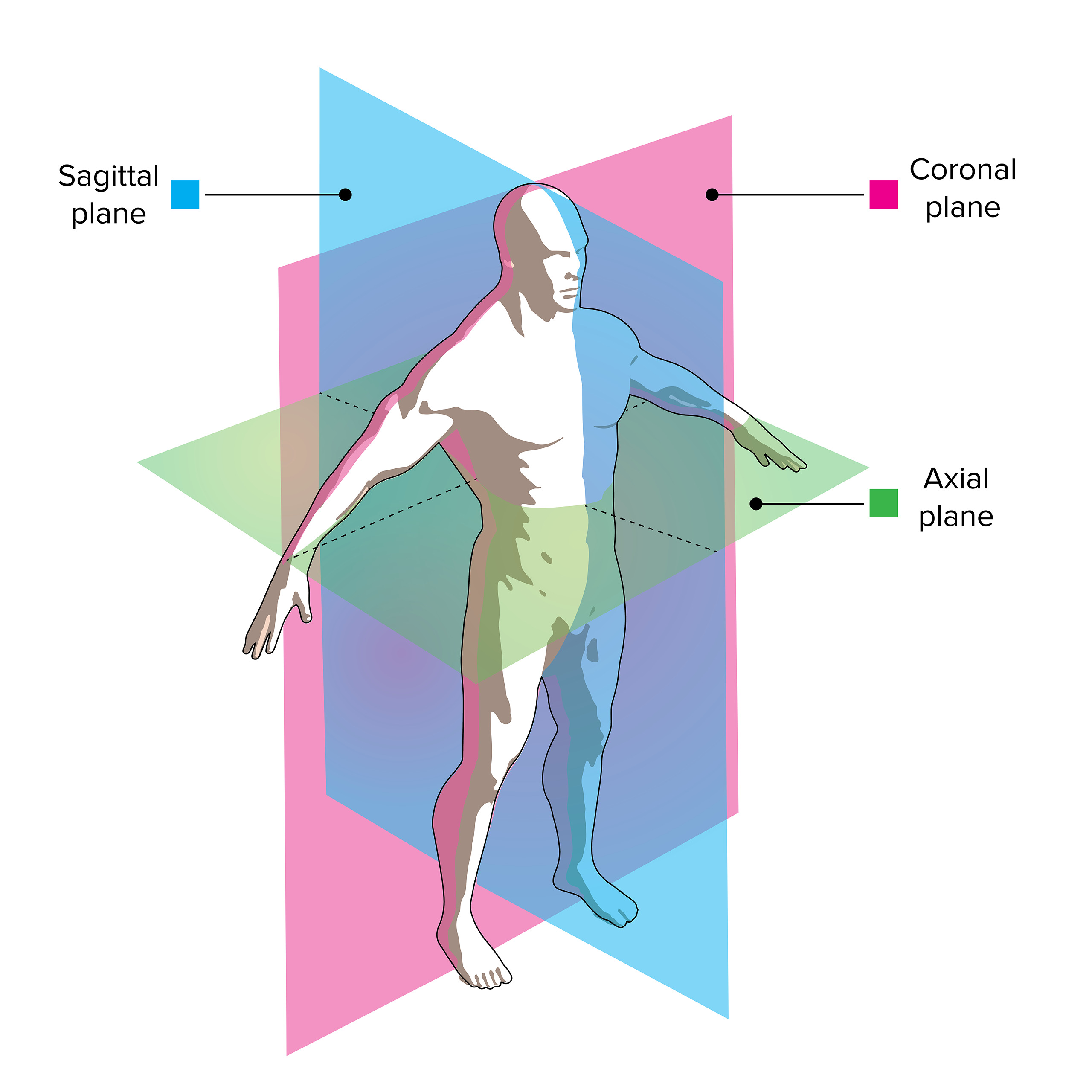
Axial plane MRI obtained by CISS sequence. A right medial superior... Download Scientific Diagram
The landmarks on the midsagittal MR image to determine the angle of the reference lines are as follows: the supraorbito-meatal line (the center of the mammillary body and the fastigium of the fourth ventricle), the orbito-meatal (OM) line (the center of the mammillary body and the most posterior point of the cerebellar tentorium), the Talairach.

Healthcare Extreme How To Read An MRI Lumbar Spine In 8 Easy Steps
MRI Faculty William Dillon, MD Professor Executive Vice-Chair Medical Director for Ambulatory Imaging Share this video UCSF Radiologist Dr. Dillon describes how radiologists read images. The different planes that Radiologists use are axial (divides the body into top and bottom halves), coronal (perpendicular), and sagittal (midline of the body).

Brain MRI. Axialplane Flair T2wheigted sequences reveal multiple... Download Scientific Diagram
It is most commonly performed with thin-slice data from volumetric CT in the axial plane, but it may be accomplished with scanning in any plane and whichever modality capable of cross-sectional imaging, including magnetic resonance imaging (MRI), PET and SPECT.

MRI Shoulder How we do it How is MRI Shoulder done at Mater Dei Hospital
In the X-Y-Z coordinate system, axial is an X-Y plane, parallel to the ground, the head from the feet. A coronal is an X-Z plane, the front from the back. A sagittal is a Y-Z plane, which.

Understanding Brain MRI Planes and Cuts Resonance Imaging 101 YouTube
Anatomical planes are imaginary planes/2D surfaces used to divide the body to facilitate descriptions of location and movement. The anatomical position is used as a reference when describing locations of structures and movements. It is an upright position with arms by the side and palms facing forward. Feet are parallel with toes facing forward.

Figure 6 from A guide to identification and selection of axial planes in resonance
Axial Plane: is at the level of AC-PC line, dividing the brain into: Axial Vertex (AV) and Axial Base (AB) Basal Plane: is parallel to Axial Plane, separating the Axial Base (AB) from spinal cord. Coronal Plane: is perpendicular to the axial plane and goes through the mid AC-PC point, dividing the brain into:

MRI of the abdomen in the axial plane (A), showing distention of the... Download Scientific
CT evaluation of diffuse infiltrative lung disease: dose considerations and optimal technique. J Thorac Imaging. 2009;24:252-259. HRCT Primer. Image Reconstruction Planes. Review the different image reconstruction planes, which include axial, coronal, and sagittal planes and are made possible using volumetric acquisition CT.

T1 axial plane MRI of the brain. Download Scientific Diagram
use: most widely used axial plane for MRI and increasingly for CT Schaltenbrand definition landmarks: from the center of the anterior commissure and the center of the posterior commissure brainstem vertical line landmarks: a line perpendicular to the posterior surface of the brainstem orbitomeatal line

Imaging of the Spine and Spinal Cord Concise Medical Knowledge
Ventricular volumes and ejection fraction can be measured from a stack of cine MR images in a short axis or axial plane [8, 14]. The ventricular volumes are traced in end diastole and end systole through the entire ventricle. In plane PC-MRI can be used to visualize regurgitant jets. This can allow for subjective assessment of regurgitation.

Figure 10 The MRI images in three orthogonal planes (sagittal, coronal, and axial) in a 1.5
MRI. The hippocampus is best imaged in the coronal plane, angled perpendicular to the long axis of the hippocampal body. The three parts of the hippocampus (head, body and tail) can be identified based on morphology and by using local landmarks 3. amygdala-hippocampal head junction. landmarks. anterior lobe of the pituitary to basilar artery

CT images showing two axial plane sections of the brain of patient 4... Download Scientific
Recommended Hip MRI Protocols, Parameters, and Planning. MRI hips localizer. A three-plane localizer must be taken at the beginning to localize and plan the sequences. Localizers are normally less than 25 seconds, T1-weighted low-resolution scans.. Plan the coronal slices on the axial plane; angle the positioning block parallel to the RT and.

MRI scan in axial plane at the level of the maxillary region... Download Scientific Diagram
T2 stir coronal 3mm. Plan the coronal slices on the axial plane and angle the planning block parallel to the right (RT) and left (LT) optic nerve. Check the planning block in the other two planes. An appropriate angle must be given in the sagittal plane (perpendicular to the optic nerve). Ensure that the slices are sufficient to cover the.

Axial Plane of Human Brain Download Scientific Diagram
The pars marginalis, II: a "bracket" sign for the central sulcus in axial plane CT and MRI.. Int J Neuroradiol 1996; 2: 20-24. ↵. Naidich TP, Brightbill TC. Systems for localizing fronto-parietal gyri and sulci on axial CT and MRI. Int J Neuroradiol 1996; 2: 313-338. Valente M, Naidich TP, Abrams KJ, Blum JT.

Atlas JHP MRI Brain Atlas
Look at each available plane (axial, coronal, sagittal) Check for abnormal MRI signals; Work through the anatomy of the areas you are looking at to make sure nothing is missed/abnormal; Comparing both sides of an image (if possible) can reveal clear areas of abnormal signalling; Shape, size, location, and intensity of the signal

(a) Axial plane contrastenhanced MRI demonstrating lesion at time of... Download Scientific
The landmarks on the midsagittal MR image to determine the angle of the reference lines are as follows: the supraorbito-meatal line (the center of the mammillary body and the fastigium of the fourth ventricle), the orbito-meatal (OM) line (the center of the mammillary body and the most posterior point of the cerebellar tentorium), the Talairach.

The 18 anatomical landmarks on a T1weighted MRI. (A) Axial plane at... Download Scientific
The x-axis axis is always forward (Tait-Bryan angles) and the right-hand rule applies. The diagrams below should help clear any confusion up. The three dimensional Cartesian coordinate system provides the three physical dimensions of space — depth, width, and height.